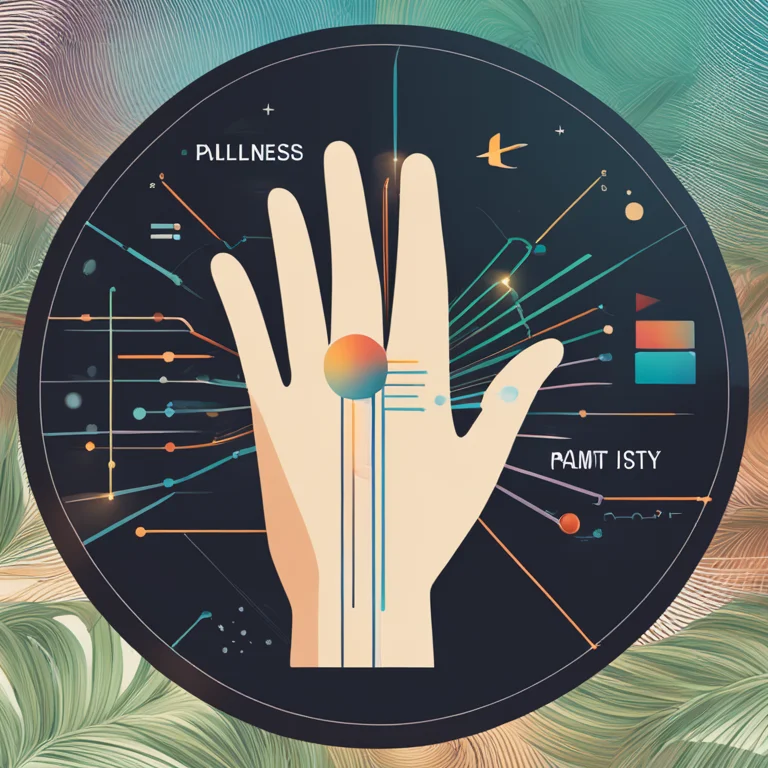
Can Palmistry Forecast Life Changes?
Investigate whether the ancient practice of palm reading holds any clues to an individual's life expectancy in the modern context.
article by Nora Pennington
The Enigma of Palmistry and Longevity
Palmistry, also known as chiromancy, has been practiced for centuries as a method of divining aspects of a person's character and life path. One of the most tantalizing promises of palmistry is the suggestion that the lines on our hands could provide hints about our longevity. However, the question remains - can the lines on your palm genuinely forecast your life expectancy? As we move deeper into the modern age, the intersection of ancient beliefs and scientific verification becomes a fertile ground for exploration and skepticism alike.

Life Line: A Misunderstood Marker?
The life line, starting from the edge of the palm above the thumb and arching toward the wrist, is one of the most scrutinized features in palmistry. It’s often believed that the length and depth of the life line correlate with the length of one's life. However, contemporary palmists assert that the life line actually indicates vitality, quality of life, and major life changes, rather than providing a precise lifespan prediction. As we continue to embrace holistic well-being in 2024, this interpretation aligns with the notion that well-being encompasses more than just the number of years lived.

Palmistry and Modern Health Insights
The practice of palmistry in 2024 intersects with a growing awareness of how our lifestyles influence our health. Some palm readers collaborate with the insights provided by modern medicine, suggesting that certain markings on the palm could indicate underlying health issues or predispositions. While not a substitute for medical advice, palmistry thus becomes a reflective exercise, prompting individuals to consider their health and lifestyle choices that may, in turn, affect their longevity.

Scientific Scrutiny and Palmistry
Despite its allure, palmistry has not stood up to rigorous scientific scrutiny as a reliable method for predicting life expectancy. Studies attempting to link palm lines with genetic markers or specific health outcomes have largely been inconclusive or criticized for methodological flaws. That said, the value of palmistry may lie more in its psychological and entertainment aspects, providing a narrative that people find meaningful and engaging in a personal and often reassuring manner.
Palmistry in a Technological Era
As we advance technologically, the potential for palmistry to predict life expectancy is an intriguing thought experiment. What if artificial intelligence could analyze countless palms, searching for patterns missed by the human eye? As of 2024, no AI has demonstrably made accurate predictions about life expectancy based on palm lines. The complexity of human genetics and the multitude of factors influencing lifespan make such predictions exceedingly challenging, even for the most advanced algorithms.
Embracing Uncertainty with Palmistry
Our fascination with palmistry, particularly its claims about life expectancy, may stem from a deeper discomfort with uncertainty and the unknown aspects of our future. Palmistry offers a form of narrative control, a story we can tell ourselves about what lies ahead. Whether or not the palm truly reveals the secrets of our lifespan, what remains valuable is the dialogue it opens up about life, health, and our journey through time.
Published: 1/10/2024
Modified: 1/10/2024
More predictions
Come back here soon to learn more about yourself and your future


The Intricacies of Palm Reading: A Guide to Palmistry
Delve into the ancient art of palm reading with our comprehensive guide that reveals the secrets hidden in the lines of your hands.


Palm Reading Guide: Basics and Insights
Delve into the art of palmistry with this essential guide to reading palms, revealing secrets to personality and destiny through the lines on your hand.


Guide to Palmistry: Interpreting Your Palm Lines
Discover the ancient art of palmistry with our comprehensive guide to reading and interpreting the lines on your palms.